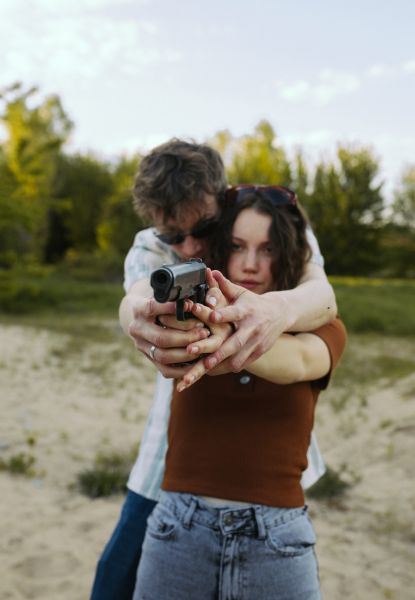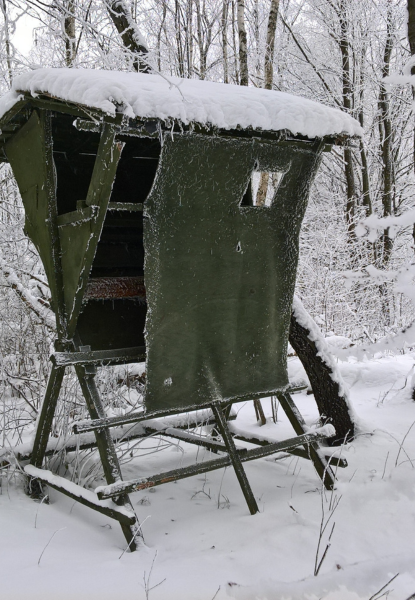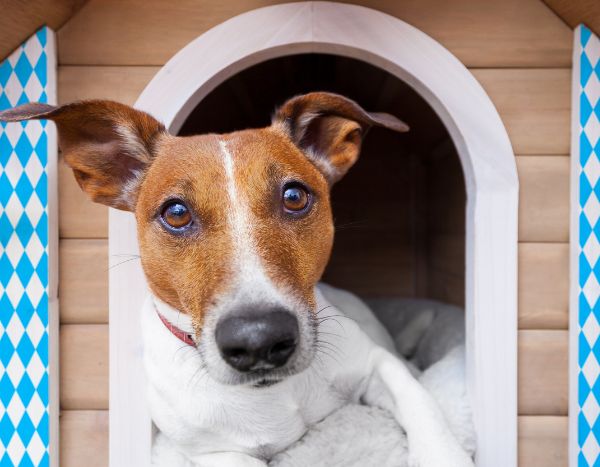Introduction
When winter is approaching for many, that means one thing: hunting season! But let’s be honest, heading out into the cold to hunt isn’t as simple as just grabbing your gear and going. With freezing temperatures and winds that can bite you to the core, you need to plan to stay warm when hunting.
Whether you are a seasonal hunter or a newcomer, you need to master the art of staying warm while hunting in cold weather, so your trip ends up being a success and you come out of it safely and fully satisfied having enjoyed your time in the outdoors.
In this guide, we will explain to you all the things you need to know about staying warm when hunting in cold weather covering layering, gear and strategies. We will also give you tips on how to be a good hunter in cold weather.
Why Do We Do Cold Weather Hunting?
Before we get into tips and tricks for staying warm while hunting in cold weather, why is cold-weather hunting so attractive for hunters?
I mean, this is a valid question because, to a “normal” hunter, cold-weather hunting might seem senseless, as doing anything in frigid temperatures has always been taken as a no-go activity.
But, in reality, when you are doing cold weather hunting, you get a lot of unique opportunities to witness wildlife at its finest.
In a cold environment, the food source is scarce, hence animals get out of their hiding spot a lot to find food, and this ends up creating many opportunities for hunters to hunt.
Above all, you get to immerse yourself in the beauty of nature; I mean, there is nothing more astonishingly beautiful than the sky before it snows.
Essentials for Staying Safe and Warm
So you’re going to battle the cold and want to come out on top of it but how do ensure your safety and comfort during your cold-weather hunting adventure?
1. Hydration and Nutrition
When you are in the wild, you should always stay well-hydrated and nourished, as this helps you maintain body heat and energy at an optimum level.
In cold weather, too, you can lose a lot of energy through high respiration, even though you don’t sweat as much as you do in hot conditions.
So, remember to keep a lot of water with you and high-energy snacks to keep your body fueled while hunting in the cold.
2. Physical Conditioning
Before you get out for your hunting expedition, you need to take a look at your body.
Maybe you are a new hunter who has never been in the wild or hunted anything; it will end up being really difficult for you to be active at all in that environment, let alone hunt an animal.
So, aim to be in good shape, do regular exercise and focus on strength training so your stamina can improve, making it approachable for you to be active in harsh conditions.
3. Be Prepared for Emergencies
While hunting in the cold weather, you may get injured or get stuck in a tricky situation.
That is why you need to take a small survival kit with you which has all the essentials like first aid, fire-starting materials and a small tent in case you get lost.
This will keep you safe during emergency situations and give you some time to wait for help.
4. Plan For Darkness
When you are in the wilderness during winter, the days will be shorter, and the sun will dim down faster than usual.
So, be prepared to handle darkness; try to carry a headlamp so you can easily navigate your way to your cabin or tent while your hands are free to carry other tools.
5. Protect Your Firearms

Let’s say you are in the midst of your hunt, prey is right in front of you, and your firearm doesn’t work.
That situation will be the worst scenario you might end up encountering while doing cold weather hunting, but it does happen as cold temperatures really affect the performance of your firearms.
So, buy yourself a cold-weather gun lubricant which will stop your gun from becoming stuck in cold temperatures and keep your firearms in a warm place when you aren’t using them.
Everything You Need to Know About Layering in Cold Weather
Before we unravel all the essential gear you will need for hunting in cold weather, let’s go through the primary strategy every hunter uses for staying warm during cold weather.
By dressing in layers, you will be able to adjust your clothing as temperature changes throughout the day. Layering for cold weather hunting with base, mid and outer layers will help to set you up for a comfortable trip.
Basically, whenever you feel warm, remove a clothing item; whenever you feel cold, add more layers to your clothing.
When you are in the wild, the temperature will change drastically, and your choice of layers will make all the difference in ensuring you will be ready for whatever the wilderness throws at you.
Here’s how to layer so you can keep yourself warm in cold weather.
Moisture-Wicking Base Layer
Your layering’s base layer is like your skin, as it is the first and foremost defence system against all the outer elements.
The purpose of the base layer is moisture management and keeping your skin dry.
The problem is when you are moving around in the wilderness, you are bound to get sweaty, and if sweat stays on your body for a longer time, it can turn cold because of the low temperature and will lead you to feel discomfort.
This is the reason why you need a moisture-wicking base layer.
For the base layer, choose fabrics like merino wool or fabrics that quickly move sweat away from your body and keep your skin dry for longer.
Insulating Mid-Layer
In layering, the mid-layer traps warm air close to your body to create a thermal barrier and insulate you.
It is an intermediary between your base and outer layer; it prevents frigid cold air from entering your body and maintains enough heat to keep you warm.
For mid-layer, try to go for materials like fleece or synthetic insulators as they retain heat the most and, at the same time, don’t make you feel like you are wearing heavy clothing.
Outer Layer
The outer layer is your primary defence against the harsh conditions nature throws at you when hunting in the wild.
This layer should be able to do two things; it needs to be water-resistant to keep you away from rain and snow and provide space for breathability so moisture doesn’t build up inside your body.
You need to factor in many things when considering outer-layer clothes, as adjustability matters the most.
A waterproof and windproof jacket is one of the clothing you can use for the outer layer to save you from rain and snow, and if it’s a heated jacket, you can easily manage your body’s microclimate too.
And remember to get clothing for the outer layer, which can withstand the obstacles you will have to go through while hunting, so it can save you from getting injured.
Don’t Forget External Accessories
Layering doesn’t stay embedded in a base layer, mid-layer and outer layer; it extends beyond other clothing accessories, which also help you keep warm.
Accessories like gloves, neck gaiters, and balaclavas are necessary because they provide insulation to your crucial body parts.
Remember to take care of your extremities, like hands and feet, and focus on them by keeping them warm through heated gloves and socks.
Cold Weather Clothing Essentials
We outlined how critical layering is so let’s now cover some of the clothing essentials that you will build into your layers. We outline what to look for and recommended heated gear for hunting in a separate article.
These include heated base layer shirts, heated vests and jackets, heated gloves and socks.
Gear Essentials for Cold Weather Hunting
Now that you have the knowledge about the clothing gear you need to take with yourself to keep you warm while hunting in cold weather, let’s take a closer look at the hunting gear you should take with you which can help you hunt your prey easily.
Heated Optics
When hunting in cold weather, you are bound to get through the difficulty of not being able to see clearly because of the foggy and frosty conditions.
Heated optics combat these conditions and provides you with a clear image of your surroundings.
Heated optics are equipped with heated elements that keep their lenses clear, allowing you to never miss any shot at a prey.
Hunting Blinds

If you are new hunter, then you must be worried about the amount of wait you’ll have to do for prey to come out of its place or how you will camouflage yourself to stay hidden from the prey, well don’t worry because all of these problems can be solved by hunting blinds.
Hunting blinds provide concealment and shelter to you, making it approachable for you to wait patiently in a warm place without being noticeable to the prey or being exposed to harsh cold outside.
You can also put your portable heater in hunting blinds, providing more ways to stay warm while waiting for your prey.
Heated Hunting Seat
You must be patient when hunting in cold weather, but being patient in cold weather conditions is quite challenging.
A heated hunting cushion will allow you to sit in a nice comfy place while waiting for your prey so you don’t feel uneasy.
You can also attach your heating seat to a tree, so if you are perched on a tree stand, you’ll stay still, warm, and can easily wait for your prey for hours.
Game Calls
To have a satisfying hunting adventure and feel like you achieved the fulfilment of the trip, you need to implement decoys during the hunt.
One of those decoys is game calls which produce high-quality, cold-resistant realistic sounds to lure animals out of their hidden spots.
During cold weather, animals are too cautious, so game calls are one of the easiest techniques you can use to hunt animals.
You can use it to mimic mating calls or mimic a fellow animal in danger to entice your prey into falling for your decoy.
Thermal Imaging Devices
Thermal imaging devices will be your only hope if you plan on hunting animals during the night because it will be hard for you to see and attack prey.
Thermal imaging devices detect heat signatures in your surrounding, allowing you to spot animals even in low-light conditions.
If you plan on doing a hunting competition with friends, thermal imaging device can give you a distinct advantage over others when hunting the prey.
Heating Tips for Cold Weather Hunting Cabin
Now that you have general tips related to what to do and what gear to take to your cold-weather hunting adventure, now let’s talk about heating tips for keeping your cabin warm in the wild.
Choosing the Right Heating Strategies
- Bring wood stoves, propane heaters, or electric heaters for heat
- Ensure proper ventilation and safety precautions with indoor heating devices
Insulation and Draft Prevention
- Prepare the cabin to retain warmth effectively
- Add insulation to walls, windows, and doors
- Seal cabin’s drafts and gaps to prevent heat loss
Layering for Indoor Comfort
- Apply the layering principle to cabin attire.
- Try optimal materials for indoor clothing, such as cosy sweaters and thermal socks.
- Adjust clothing layers to maintain a comfortable temperature indoors.
Skills And Strategies You Need to Master for Cold Weather Hunting
By now, you have a certain understanding of what gear you need to take with you to stay warm and safe while doing cold weather hunting, but at the same time, it’s quite crucial for you to develop skills and strategies to get better at the main task: hunting.
In this section, we will delve into some techniques and strategies you can use to make your outdoor hunting experience easier for you, and unlike other new hunters, you don’t end up hurting yourself or failing at hunting.
Stealth And Concealment
Before you go out in the wild, you need to master the art of stealth and concealment, as your prey will be more cautious and hard to catch in the cold weather.
Practice in a cold weather environment by blending into the surroundings and try to be mindful of any unnatural movements or sounds you notice to mimic animal presence.
And, be in a camouflage state when hunting; basically, wear clothing that matches the winter landscape so you can’t be detected by wildlife.
Patience and Persistence
As a newbie hunter, you probably would have imagined yourself just going straight into the action of hunting as soon as you get to your hunting destination, but that isn’t the case.
Hunting in cold weather demands patience and persistence from you, and if you don’t have it, then hunting isn’t for you.
Wildlife will be less active due to the frigid temperature of the surrounding, so you will be spending hours sitting in one place waiting for your prey to come out.
Just try to stay focused, alert and be prepared for long periods of stillness because if you aren’t, you will totally get bored.
Learn Tracking Techniques
When you go out hunting in a cold weather environment, being able to track animal is the best gift you can have as a hunter.
The main advantage you get out there are the snow marks left by your prey.
If snow is fresh and has marks on it, that means you should totally follow it as long as the marks aren’t of a predator animal like a bear or a wolf. In that case, you should run away to stay safe.
Learning to identify tracks and deciphering animal movements can lead you to their core areas, where you can find a lot of them, and that can increase your chances of hunting successfully.
Learning To Set Up Decoys
As we mentioned before, during the winter, animals are more bound to get out of their safe places as they need to find food for themselves; hence they are more inclined to come towards calls which mimic distressed prey or potential mate for them.
If calling seems like a difficult option for you, you can set up physical decoys to catch them.
Maybe lure them by using food or some other trick so they can get under your decoy, and you can catch them.
Final Thoughts on Staying Warm When Hunting in Cold Weather
Hunting in cold weather requires a combination of physical preparedness, having the right gear, and knowing nature’s patterns, and if you are missing even one of these things, then hunting in cold weather is going to become a lot more difficult for you.
Remember to have a good diet, so your temperature and energy stay stable, and learn how to build a fire, as your heater won’t be working effectively when you are outdoors and hunting.
Moreover, as you are a seasonal or a newbie hunter, there are some important aspects you need to understand before you go to hunt.
You need to respect wildlife when you are in the wild, even if you are hunting them.
You can start by practising ethical hunting and trying to make humane shots so your prey dies instantly and does not suffer a lot.
Also, don’t set fire to lure them out and take their food source away, as the cold weather condition is already too hard for them to survive.
Lastly, have your own safety in mind and make it your first priority. I cannot stress this enough.
The cold weather hunting can become hell for you if you don’t go with the right gear and strategies.
You can get frostbite, hypothermia and other health risks, so adapt all the heating tips we gave to you in the guide and follow them.
Now, bundle up, sharpen your skills and get out into the winter wilderness to have the time of your life by embracing the cold and having the most fun out of cold weather hunting.





